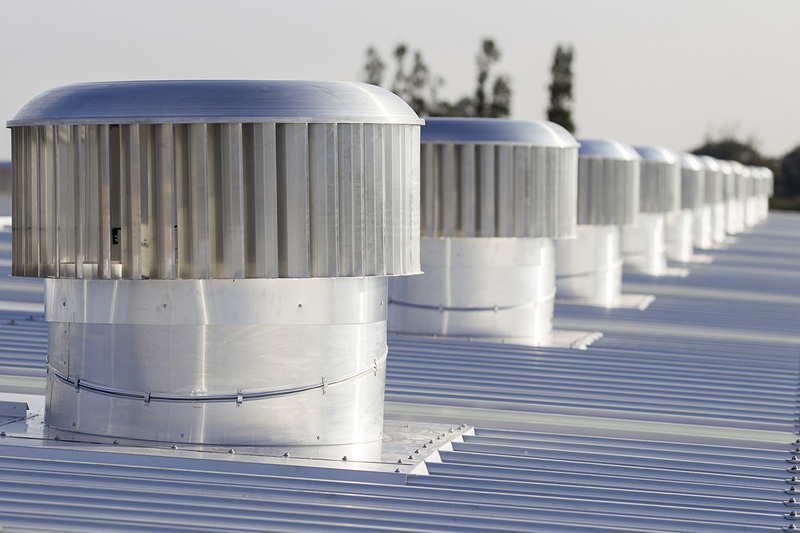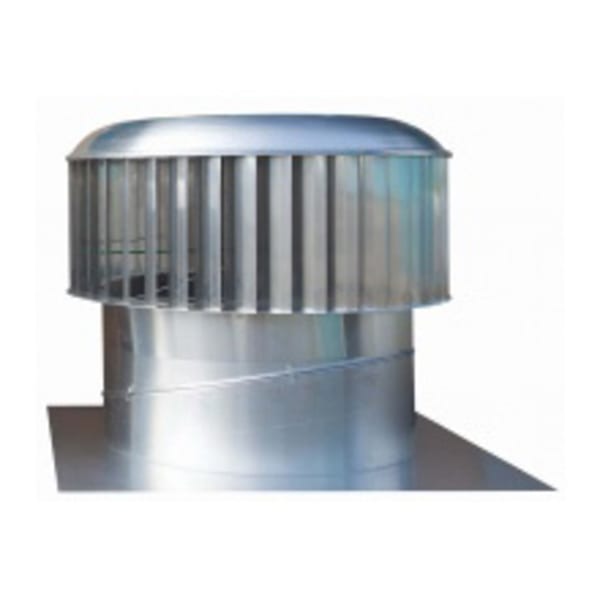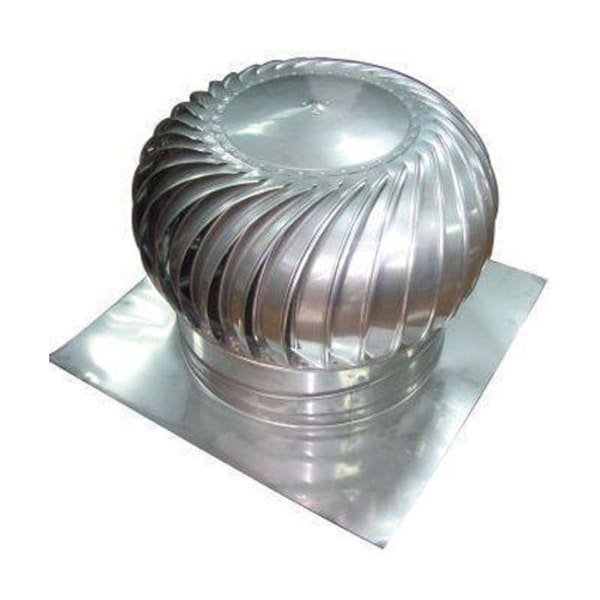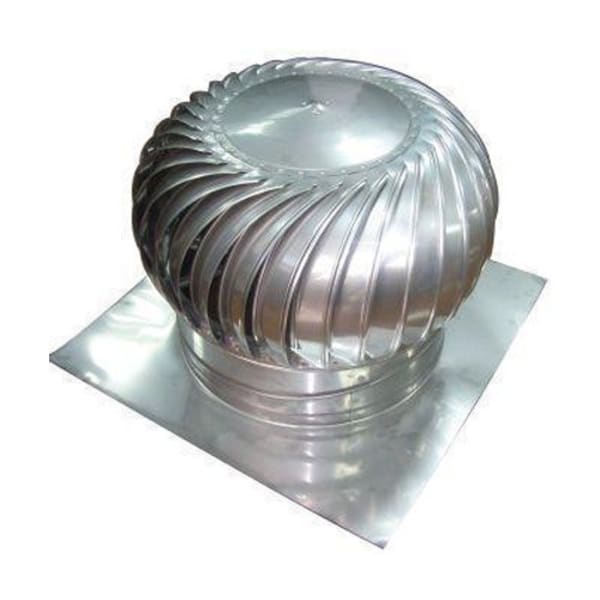Rotary Ventilators
Hardworking Devices That Mother Nature Pays to Operate.

As an alternative to mechanical ventilation, the rooftop rotary ventilator now is not only widely accepted as industrial ventilation, but also has become a common ventilation feature used in other types of buildings including institutional, commercial and residential.
Factories, warehouses, workshops, houses and even community buildings are frequently constructed without an efficient natural ventilation system for the benefit of occupants.
Due to the simple operating mechanism and relatively affordable price, a rotary ventilator which is driven by natural wind force may be a preferred choice to ventilate the building without depending on mechanical ventilation.
Should the interior become hot or stale, doors and windows can be opened, however stale and hot air will not disperse by itself. As a result, the opening of doors and windows is simply not sufficient to provide ventilation in most buildings.
Unlike doors, windows and static ventilation, Rotary ventilators draw air upwards creating convection current and in the process they extract stale air, together with air which has become hot as the result of the building's exposure to long hours of sunlight. Heat from manufacturing equipment within the building is also extracted by these efficient ventilators. As the stale and hot air is extracted it is replaced by fresh air at ambient temperature entering through doorways and openings thus completing the convection cycle current and improving the internal environment.
Needless to say, fresh air makes people feel more alive and vitalised whilst stale air causes people to feel lethargic and disinterested. On hot days the movement of air over the body causes evaporation to occur which is the natural way to cool down and helps prevent moderate heat stress.
Rotary Ventilators also help prevent condensation by extracting condensation-forming air, and in case of fire will extract smoke and fumes, preventing the building from becoming smoke filled and assisting the occupants to escape to safety. They are hardworking devices that Mother Nature pays to operate.
The Importance Of Adequate Make Up Air
Rotary ventilators have a weak capacity to pull against pressure. Therefore it is critical to the performance of rotary ventilators that an adequate capacity be provided in all buildings for the easy entry of make-up air i.e. that fresh air required to replace the stale air exhausted by the vent. In general, make-up air is be provided by open doors, windows and louvres.
COMMON QUESTIONS
Below are some common questions we have received concerning Rotary Ventilators
1. Do rotary ventilators work?
The answer is yes, especially when there is a breeze blowing. When there is no wind blowing they are still effective as a roof vent that allows hot air to escape. As hot air escapes the blades will turn even with no breeze.
2. How do rotary ventilators work?
In the first instance they allow hot air to escape from your roof – this is irrespective of prevailing wind. Once there is wind as well, then they help extract the air from your roof space. All of this is based on pressure differentials, either caused by temperature differences, or wind.
3. How much will rotary ventilators actually cool my building?
Given the variables inherent in building designs, it is impossible to provide precise guidance on what will happen to indoor room temperatures, however we do know that roof space temperatures can rise as high as 70°C, and vents can easily reduce this by 20-30°C, thereby reducing the heat loads on you ceiling insulation and any air conditioning ducts running through the roof space.
4. Can they be installed on both metal and tiled roofs?
The flashing supplied is suitable for use on both metal and tiled roofs, and the instructions make the different steps clear.
5. How many vents do I need?
Call our sales team to help you select the ventilators required.
6. How much do the vents cost to run?
All our ventilators cost nothing to run.
7. How difficult is it to install a ventilator?
Most customers choose to have their ventilation system installed by a professional – cutting a hole in a roof can be intimidating to say the least. However, step by step instructions are provided for your reference.
8. Should ventilators be covered in the winter?
Ventilation systems are required year around. Most people associate ventilation with heat; however, of the two major destructive forces at work, moisture, not heat, is the most destructive. Since winter air is drier, it absorbs moisture from your building. This moisture produces mildew, rotting conditions damaging wood plaster or paint. Insulation also becomes wet and provides less resistance to heat loss.
9. Does Rain Come in Through Turbine Roof Vents?
When the turbine is spinning raindrops are deflected off the spinning surface. Even when the turbine is not being turned by the wind it gives one more exit for the hot air.
10. Are the vents noisy?
Our ventilator range has a bearing system that is designed to be completely silent, each bearing is self-lubricating and requires no maintenance.
11. Is a fresh air intake required with the installation of Rotary Ventilators?
Depending on your building, there may be enough existing air intake to provide fresh air. If additional fresh air is required, the most economical way to achieve this is by installing louvers.
$728.00
$1,304.35
$1,854.79
$3,295.66
$1,097.39
$1,220.43
$391.30
$140.87
$320.00









